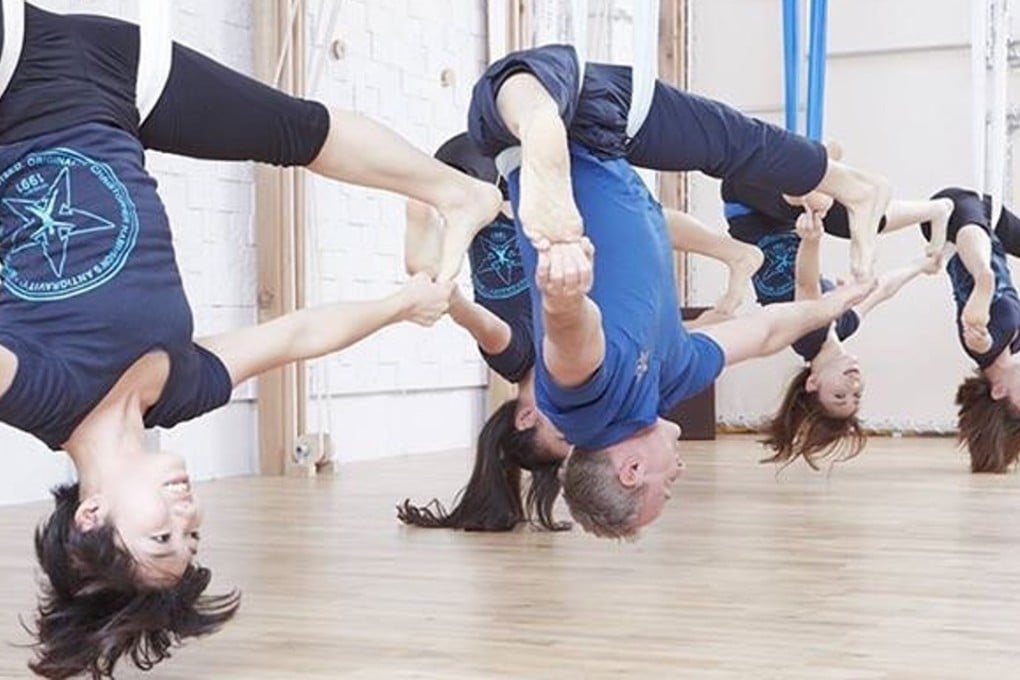Why aerial yoga has taken off in Asia – it improves flexibility, strengthens muscles, and helps relieve stress
It’s not clear who first practised yoga while in a silk hammock, but the idea is to perform traditional yoga moves or aerial adaptations of them in the air using the hammock for support – and yogis swear by it

It’s Friday evening and I’m practising yoga to wind down the week, except I’m suspended a metre above the ground by a six-metre piece of silk and attempting to balance out a tree pose.
Soon, I will be attempting aerial handstands and then relaxing in a floating savasana – a yoga pose where you lie on the flat of your back. How exactly did I end up here?
It’s not clear who first practised yoga while in a silk hammock. Michelle Dortignac, of Unnata Aerial Yoga in New York, is a dancer who practised and taught Hatha yoga for years before taking an aerial acrobatics class.
She claims inspiration from BKS Iyengar’s school of yoga – particularly his extensive use of props to support a student’s practice – in the development of aerial yoga in her programme.
AntiGravity Fitness’ Christopher Harrison, who has a performance and gymnastics background, devised AntiGravity aerial yoga as a way of warming up and stretching out his performing troupe of acrobats and aerialists.
Both schools emerged in New York in the mid-2000s before reaching Asia – the Philippines and Australia in the case of AntiGravity, and Japan in the case of Unnata Aerial Yoga.